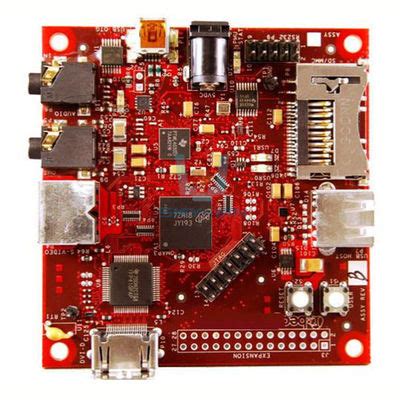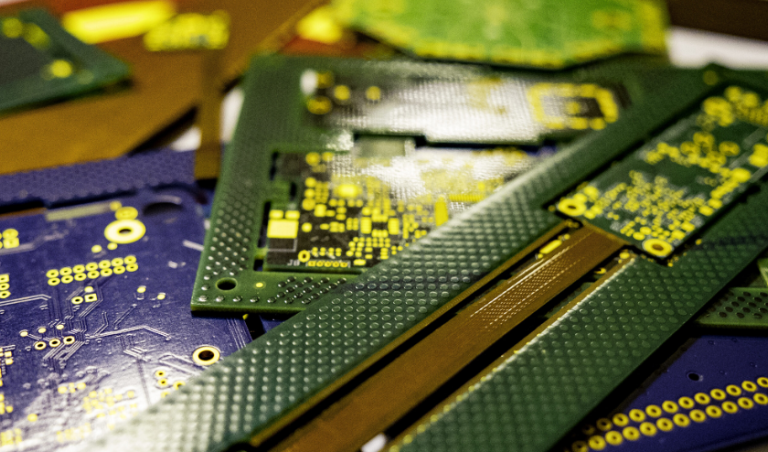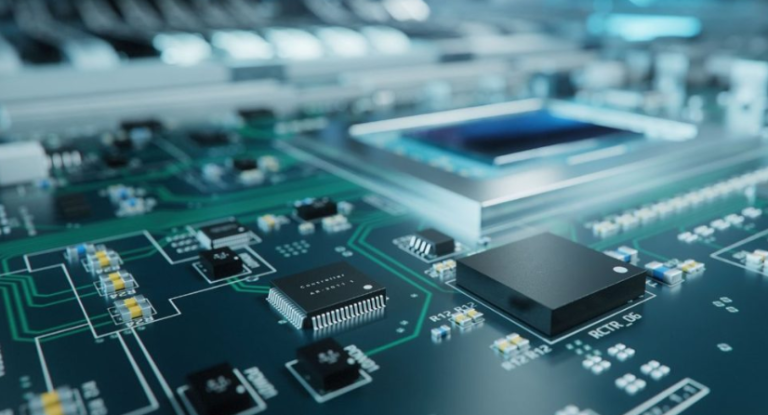Drilling and Etching For Rigid-Flex PCB
Drilling and etchback are an important procedure before electroless copper plating or direct copper plating on a rigid-flexible printed circuit board after CNC drilling. In order to rigidly print a printed circuit board to achieve reliable electrical interconnection, it must be combined with The special printed circuit boards special material composition is suitable for the characteristics of its main material, polyimide and acrylic, which are not resistant to alkalinity, and suitable de-drilling and etchback techniques are selected. Rigid-flex PCBs are used to remove dirt and etchback. Wet-separation technology and dry-process technology are used.
Rigid-flex PCB wet-drilling and etchback technology consists of the following three steps:
1, bulk (also called swelling treatment). The use of alcohol ether swelling medicine to soften the pore wall substrate, destroy the polymer structure, and then increase the surface area that can be oxidized, so that its oxidation is easy to proceed, generally using butyl carbitol to swell the pore wall substrate. The
2, oxidation. The purpose is to clean the hole wall and adjust the hole wall charge. At present, the domestic tradition uses three methods. The
(1) Concentrated Sulfuric Acid Method: Since concentrated sulfuric acid has strong oxidizing and water absorption properties, most of the resins can be carbonized to form a water-soluble alkyl sulfonate and the reaction formula is as follows: CmH2nOn+H2SO4–mC+ The effect of nH2O in removing the pore wall resin is related to the concentration of concentrated sulfuric acid, the treatment time, and the temperature of the solution.
The concentration of concentrated sulphuric acid used for removing dirt is not to be less than 86%, and is 20-40 seconds at room temperature. If cavitation is to be etched, the temperature of the solution should be appropriately increased and the treatment time must be prolonged.
Concentrated sulphuric acid only works on the resin and is not effective on glass fiber. After concentrating sulphuric acid is used to grind the wall of the hole, the glass fiber head protrudes from the hole wall and needs to be treated with fluoride (such as ammonium bifluoride or hydrofluoric acid). When fluoride is used to treat prominent fiberglass heads, process conditions should also be controlled to prevent wicking due to excessive glass fiber corrosion. The general process is as follows:
H2SO4: 10%
NH4HF2: 5-10g/l
Temperature: 30°C Time: 3-5 minutes
According to this method, the rigid-flexible printed circuit board after drilling is used for drilling and recessing, and then the holes are metalized. Through the metallographic analysis, it is found that the inner layer of drilling pollution does not go completely, resulting in the copper layer and the hole wall. The adhesion was low, and for this reason, in the metallographic analysis of the thermal stress test (288°C, 10±1 second), the copper layer of the hole wall fell off and the inner layer was broken. The
Moreover, ammonium hydrogen fluoride or hydrofluoric acid are highly toxic and wastewater treatment is difficult. More importantly, polyimide is inert in concentrated sulfuric acid, so this method is not suitable for drilling and etchback of rigid-flexible printed circuit boards. The
(2) Chromic acid method: Since chromic acid has strong oxidizing ability and strong erosive ability, it can break the long chain of macromolecular material in the pore wall and cause oxidation and sulfonation to generate more on the surface. Hydrophilic groups, such as carbonyl (-C=O), hydroxyl (-OH), sulfonic acid (-SO3H), etc., to improve its hydrophilicity, adjust the pore wall charge, and to achieve the removal of pore wall drilling and The purpose of etchback. The general process recipe is as follows:
CrO3: 400 g/l
Sulfuric acid H2SO4 : 350 g/l
Temperature: 50-60°C Time: 10-15min
In accordance with this method, after drilling, the rigid-flexible printed circuit board is subjected to drilling and recessing, and the hole is then metalized. The metallized hole is subjected to metallographic analysis and thermal stress test. The result is in full compliance with the GJB962A-32 standard. . The
Therefore, the chromic acid method is also suitable for the de-drilling and etchback of rigid-flexible printed circuit boards. For small businesses, this method is indeed very suitable, easy to operate, and more importantly, the cost, but the only method Unfortunately, there is the toxic substance chromic anhydride.

(3) Alkaline potassium permanganate method: At present, many PCB manufacturers still follow the rigid multi-layer printed circuit board to drill dirt and etch back technology – alkaline potassium permanganate technology to handle just due to lack of professional technology. – Flexible printed circuit board, after removing the resin by this method, the resin surface can be etched to produce small pits on the surface of the resin, so as to improve the binding force between the hole wall coating and the substrate, under the environment of high temperature and high alkali.
The use of potassium permanganate oxidation to remove the swelled resin for drilling, this system works well for general rigid multilayer boards but is not suitable for rigid-flexible printed circuit boards because of the rigid insulation of the rigid-flexible printed circuit board Substrate polyimide is not alkali-resistant and swells or even dissolves in alkaline solution.
What is more, it is a high-temperature, high-alkali environment. If this method is adopted, even if the rigid-flexible printed circuit board is not scrapped at the time, the reliability of the equipment that later adopts the rigid-flexible printed circuit board is greatly reduced. The
3, in and. After the oxidation treatment, the substrate must be cleaned to prevent the subsequent activation of the process solution. For this purpose, a neutralization reduction process must be performed, and different neutralization and reduction solutions are selected depending on the oxidation method. The
At present, the popular dry methods at home and abroad are plasma drilling and etchback techniques. The plasma is used in the production of rigid-flexible printed circuit boards, mainly for the drilling of the hole wall and the modification of the surface of the hole wall. The reaction can be seen as a gas and solid-phase chemical reaction between a highly activated plasma and pore wall polymer materials and glass fibers, and the generated gas product and partially unreacted particles are pumped away by a vacuum pump. Dynamic chemical reaction equilibrium process. According to the polymer materials used in rigid-flex printed circuit boards, N2, O2, and CF4 gases are usually selected as the original gas. N2 plays a role of cleaning vacuum and preheating.
The plasma chemical reaction of O2+CF4 gas mixture is:
O2+CF4O+OF+CO+COF+F+e-+…….
【plasma】
As the electric field accelerates to make it a highly active particle and collide with O and F particles to generate highly active oxygen radicals and fluorine radicals, etc., the reaction with the polymer material is as follows:
[C,H,O,N]+[O+OF+CF3+CO+F+…] CO2+HF+H2O+NO2+…
The reaction between plasma and glass fiber is:
SiO2+[O+OF+CF3+CO+F+…]SiF4+CO2+CaL
So far, plasma processing of a rigid-flex PCB has been realized. The
It is worth noting that the carbonylation reaction of O in the atomic state with C-H and C=C increases the polar group on the polymer bond and improves the hydrophilicity of the surface of the polymer material. The
The O2+CF4 plasma-treated rigid-flexible printed circuit board, which is then treated with O2 plasma, not only improves the pore wall wetting (hydrophilicity), but also removes the reaction. After the completion of the sediment and incomplete reaction of the intermediate product. After the rigid-flexible printed circuit board was processed and directly electroplated, the metallized holes were subjected to metallographic analysis and thermal stress tests using plasma technology to remove dirt and etch back. The results were in full compliance with the GJB962A-32 standard. The
[Concluding remarks] In summary, regardless of the dry method or the wet method, if the appropriate method is selected according to the characteristics of the main material of the system, the purpose of the rigid-flexible interconnection motherboard to drill the dirt and the concave etching can be achieved.






